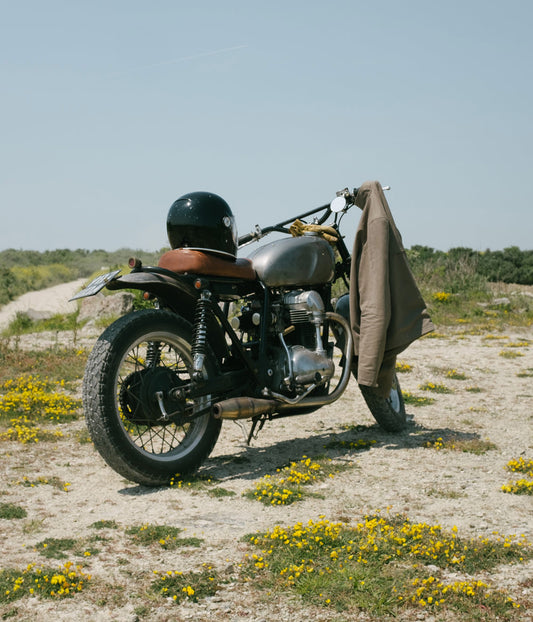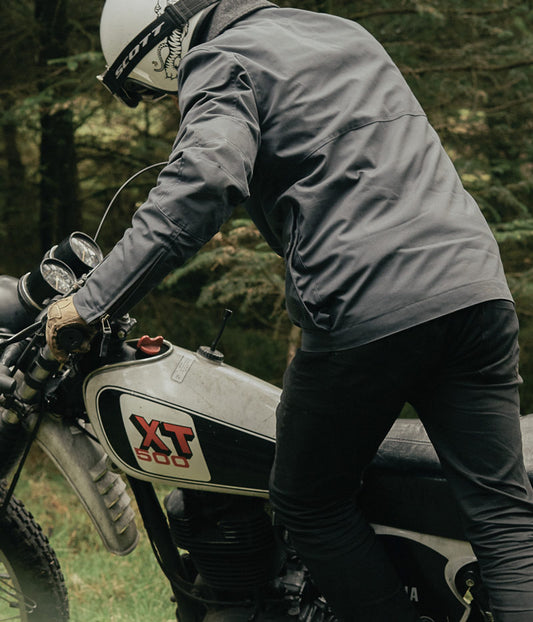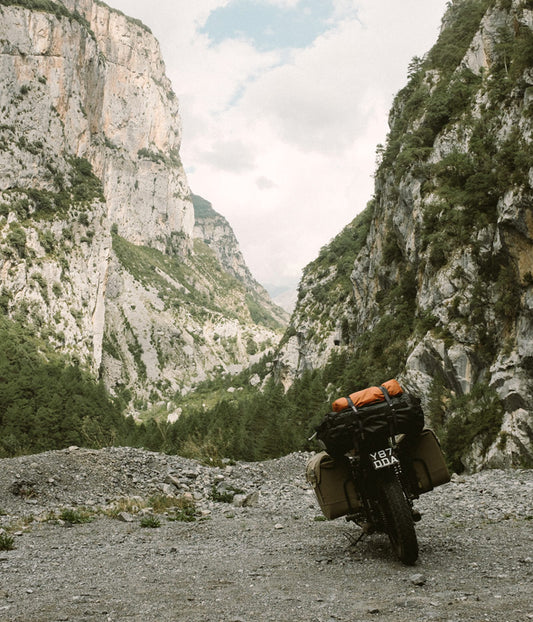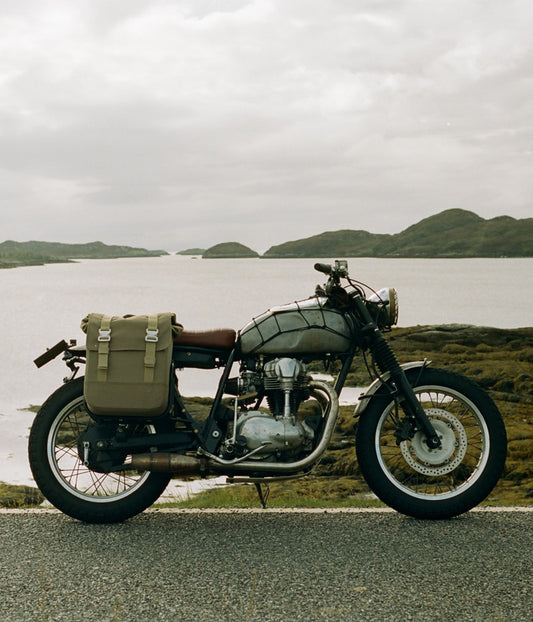Testing In The Himalayas
Having followed Bradley Armitage’s progress through the Himalayas, we were keen to catch up with him on his return to hear more about his experience and how the Hockliffe Overshirt held up. Here are some of the questions we asked:
COULD YOU GIVE US AN OUTLINE OF YOUR TRIP?
After acclimatising in Delhi, I caught a bus to Chandigarh - from here I hired a Royal Enfield Himalayan. Typically, the morning I’d planned to set off there was torrential rain. Streets flooded, ankle-deep in water. The first couple of days hadn’t run as smoothly as anticipated and so despite the conditions, I wanted to make progress. It was a hairy first day... checking my route at the side of the road, a bus caught my helmet with its wing-mirror. The learning curve in India is steep, I have the scratches to prove it.
Having been making my way through tropical jungle, I was surprised at how quickly the landscape changed. Coming out the other side of one of India’s longest tunnels just to the south of Manali, if felt like I was in the Alps. Even the architecture felt familiar. After a couple of days rest in Manali I continued up and over the Rohtang Pass. With the increase in altitude, there was another marked difference in the landscape. Everything was now more rugged, the mountains bigger. I noticed a change in the people too. There was a much stronger sense of community - maybe because up there everyone has to rely on each other. In one day I’d gone from somewhere I recognised to somewhere that felt completely new. The trip began to feel like much more of an adventure.
From then on, the road surface deteriorated quickly - the journey to Leh should have taken two days, it ended up taking three. It was worth it though. The Manali Leh highway runs through a baron valley with impossibly high mountains rising up on either side. Massive birds of prey circle above.
To me, Leh felt like a frontier town. There’s nothing around it for miles and knowing you’re in the middle of nowhere brought an energy of its own. Here I met a friend and we set out to do a 4-5 day loop; out to Pangyong lake, up to the Pakistan border and then finishing with the Khardung La. At 5,359m, it’s the world’s highest motorcycle pass. Twelve-hour days, knee-deep river crossings, broken footpegs. Every moment was an experience - nothing was lost on me.
On returning to Leh I found out that heavy rain had caused mudslides near Manali. My plan was to retrace my steps back to Delhi but now my route was blocked. With only several days left, my hands were tied. I arranged for my bike to be returned to Chandigarh and caught a connecting flight back to Delhi and then home to the UK.
WHAT WAS IT LIKE RIDING AT SUCH EXTREME ALTITUDES?
As a backdrop to the trip, political troubles in Kashmir meant that the roads to Leh were clogged with military convoys. I’d managed to find a way passed but was then behind schedule. Miles from the next township, I was traversing back and forth up the side of a mountain when I could see the weather closing in. It was getting dark and above the snow-line, temperatures dropped quickly. Running low on fuel, I had to do a re-warming exercise that I’d learned on an arctic deployment in the Royal Marines to get enough dexterity in my fingers to open the jerry can. It was a grim few hours followed by a night bunked with a room full of burly truck-drivers. Needless to say, morale was at a low. It was an experience that showed me quickly conditions change at altitude and how exposed I really was.
WHAT WAS YOUR MOST MEMORABLE EXPERIENCE FROM THE TRIP?
One morning at breakfast, I had a chance meeting with two documentary filmmakers from America. They were planning a day trip to the Lamayuru Monastery and asked if I wanted to come. Waiting for a permit to clear I had nothing planned and so decided to go. Joined by two other Americans who were cycling across the Himalayas (they were invited the night before in the bar) the five of us set out. It wasn’t long before one of the group said, “I think we can take this back-route”. Six hours later, having navigated deep sand and mud we arrived - all of us still smiling despite a few falls. Perched high on the edge of a cliff the monastery was spectacular. It looked like it was something from an Indiana Jones film. As it’d taken longer than expected to get there, we could only stay for an hour. Despite making good time, the last 30km of the ride back into Leh were darkness. In the Himalayas, there’s absolutely no light pollution. With only the headlight, everything around me was pitch black - I couldn’t see the road or anything to the left or right. It felt like I was floating. It was a brilliant day, made all the better because it couldn’t have been planned or found in a guide book.
HOW DID HOCKLIFFE OVERSHIRT HOLD UP?
On this sort of trip, you don’t have a lot of space. The weather was diverse - it went from being tropical when I first set off to being minus-six in the mountains. The versatility of the Hockliffe meant that I could wear it as my normal day-to-day riding shirt, or as an insulation layer when the temperature dropped. If you’re in the middle of nowhere six hours from a hospital, you want to feel protected. The build quality of the Hockliffe was so good that it gave me a lot of confidence when riding. Off the bike, I felt comfortable wearing it in the evenings and when travelling through the airport. I wore mine every day - I’d definitely recommend it.
---
WORDS + PHOTOGRAPHS: BRADLEY ARMITAGE















